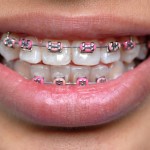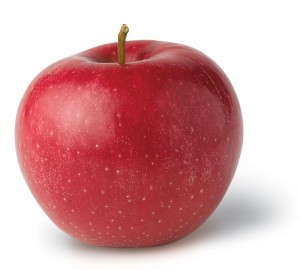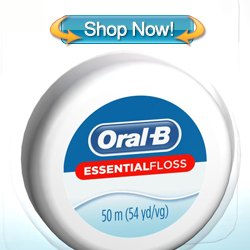There are many “fun facts” when it comes to the history of dental hygiene. Check out this infographic if you’ve ever wondered who first used the toothbrush, why flossing is important or whether it really is true that a certain type of chocolate is actually GOOD for your teeth? Find the answers to those, and other questions in this Mouth Matters infographic:
Foods That Are Good For Someone With Braces when they are Sick
 If you’ve ever worn braces you would understand the limits imposed on what you can eat. The options are even more limited when someone is sick. It’s an unfortunate tragedy, it seems, when all you want is to share in the fun and grab some popcorn and soda at the movies, or just chew a simple piece of gum. There are a lot of different types of food that can get caught in your braces so a lot of foods aren’t recommended when you have braces. However, not all treats are off limits. If you or a friend have braces and are sick it is helpful to have a few ideas for some snacks ahead of time. Here are some ideas to get your friend if they are feeling under the weather.
If you’ve ever worn braces you would understand the limits imposed on what you can eat. The options are even more limited when someone is sick. It’s an unfortunate tragedy, it seems, when all you want is to share in the fun and grab some popcorn and soda at the movies, or just chew a simple piece of gum. There are a lot of different types of food that can get caught in your braces so a lot of foods aren’t recommended when you have braces. However, not all treats are off limits. If you or a friend have braces and are sick it is helpful to have a few ideas for some snacks ahead of time. Here are some ideas to get your friend if they are feeling under the weather.
- Milkshakes, everyone loves them and they won’t hurt your braces. Be careful of having a milkshake with items such as nuts or other big chunks because it may cause your friend a trip to your orthodontist.
- Muffins- Everyone loves muffins some even taste like cake just be careful to not eat ones with nuts because they may get caught in braces. Most other types of breads are fine also.
- Cookies-Cookies can be a great way to satisfy cravings, Mrs. Fields get well cookies make a great choice.
- Cheesecake is soft and tasty, your friend will be sure love you for it.
- Ice Cream- Just make sure you don’t have items such as nuts or chunks.
- Lot’s of people love cheese. You can eat almost any type of soft cheese and you won’t have problems with your braces.
- Yogurt or pudding (with whipped cream)
- Broth soups
- Bananas with chocolate sauce
- Quesadilla
Even with all these options there are defiantly some foods you want to avoid. You will not want to give the following items as get well items for your friends with braces. Generally any sticky, hard, chewy or crunchy foods should be limited or avoided. The American Association of Orthodontics recommends avoiding: caramel, nuts, licorice, jelly beans, hard pretzels, bubble gum, candy corn, lollipops, taco chips and ice. An off-limits treat now and then is acceptable but be sure to brush and floss afterwards and when it comes to hard, crunchy items, chew lightly.
- Jolly Ranchers or other hard candy-Can get stuck and break off your brackets.
- Whole apples-Just cut the apples and you should be okay
- Peanut brittle
- Caramels are sticky and can cause problems with your braces, the sugar also can cause bacteria to grow.
Whatever your decide to get your friend as a treat to wish them to feel better they will be appreciative of your thoughtfulness. One thing to keep in consideration is that sugar can be trapped in your braces which can cause bacteria to grow and cause tooth decay and infection so be smart on your choices for you and your friends.
Causes of and Cures for Gum Disease
Gum disease, also referred to as gingivitis (characterized by the inflammation of the gums) and periodontitis (characterized by a bacterial disease of the gums), occurs when bacteria is allowed to grow and eat away at the soft tissue of the mouth, especially the already sensitive gums. Symptoms of gingivitis can be as minor as slight sensitivity to cold and warm temperatures of food or to severe concerns such as loss of teeth. Gingivitis is the beginning stages of gum disease with periodontal disease being the more advanced incarnation of the illness. Periodontal disease can progress to the point that irreversible damage has been sustained and even if the disease can be reversed there will still be the need for extensive dental work to restore the appearance of a healthy mouth, which may or may not be possible dependent on the amount of gum decay, tooth loss and bone damage sustained throughout the disease.
Gingivitis begins when the bacteria collected in plaque builds up to such a degree that it causes the gums to become inflamed, appearing swollen and red. Other symptoms include bleeding from the gums due to brushing and increased sensations of pain and irritation while brushing, flossing and eating. At this point gingivitis is merely an annoying development that can still be reversed. The teeth have not been affected nor have the gums become too weak or damaged to sustain their hold on the teeth. It is extremely important to begin the reversal process immediately once the beginning signs of gingivitis have come to the patient’s attention. This will help to keep the disease from developing into a much worse state.
If gum disease is allowed to progress to the periodontitis stage then the symptoms will develop into inner layers of the gums and bones pulling away from the teeth and forming pockets in the tissue. These pockets become hiding places for food particles and other oral bacterial debris, greatly increasing the risks for infection of the soft tissue of the mouth and of the teeth. Having a bacterial infection growing within the gum line can cause major health hazards and, if allowed, the infection may spread to other parts of the body as well. As the body wars against the growing infection bone and connective tissues that hold the teeth in place begin to erode. As this happens the teeth become looser and tooth loss can occur. Gum disease is currently the leading cause of adult tooth loss. Often sufferers become aware of their symptoms before the disease is irreversible but they allow themselves to let their embarrassment color their decisions and do not seek help until it is too late to correct the extensive damage.
The best way to fight against the onset of gum disease is to take preventative steps for oral health. Brushing teeth daily is a must, especially in the mornings and before bed, as these are the times when bacteria will begin to become corrosive. Flossing is another important step to eliminating as much bacterial and plaque build up in the mouth as is possible. For those already experiencing the beginning stages of gingivitis brushing and flossing may seem painful but the only way to reverse the disease is to cleanse the mouth as thoroughly as possible until the bacteria is no longer infectious. Brush and floss softly but thoroughly.
Try to avoid salty or sharp food items while the gums are repairing themselves. Chips and similar food items can cut the overly sensitive gums and cause increased pain or discomfort during necessary daily brushing and flossing sessions. It is also recommended that sugary beverages and foods are avoided while healing is taking place as these foods are damaging to the overall health of the mouth and instigate greater bacterial growth. There are instances when a family history of gum disease may be a contributing factor and it is important for a gum disease sufferer to keep their dental health professional apprised of their family history and their current concerns. Regular visits with a dentist will help to alleviate the symptoms of gingivitis in the hopes that nothing more severe will develop. Through proper care gum disease can be beaten and it is important to follow all the daily dental health steps that have been recommended by a dental health professional.
How to Care for Your Teeth with Braces—Part I: How to Brush
Braces are a big investment—and not just in money! It takes effort and dedication to care for your teeth while you are going through orthodontic treatment. What a shame it would be to spend thousands of dollars and many months wearing braces, only to take them off and find that your teeth are now scarred and discolored as a result of improper oral hygiene.
Braces create lots of small nooks and crannies for food deposits to hide in. If that food is not completely and thoroughly removed, a thick plaque can form on the teeth and gums. The plaque-forming bacteria in your teeth thrive on the sugars in food, and release acids that attack tooth enamel and gum tissue, causing bad breath, gingivitis (gum disease—marked by swollen, puffy, red, overgrown, or bleeding gums), and tooth decay. Plaque can even develop on the tooth roots under the gum and cause breakdown of the bone supporting the tooth.
The good news is that with proper care, you can keep the enemy—plaque—from ruining your teeth. The first step is to BRUSH often and well! Use a soft-bristled toothbrush and toothpaste that contains fluoride. Plan on spending several minutes, several times a day, taking care of your teeth. Remember, you are making an investment! Use small circular, vibrating motions, making sure to brush each surface of every tooth in your mouth, including the areas above, below and between each brace:
- Start with the outside of the teeth, with the brush at a straight angle.
- Brush the area between your gums and braces. Place the toothbrush at an angle so that you feel the bristles under your gum line and can get under the brackets; angle down for the upper teeth, up for the lower teeth.
- Clean under the braces and the rest of your teeth by angling the brush up to reach your upper teeth and down to reach your lower teeth.
- Brush the chewing surface of your teeth. Move the brush back and forth, careful to reach those back teeth!
- Finish by brushing the inside of the teeth.
After you are finished, rinse your mouth out with water. Your orthodontist may also recommend an antiseptic and/or fluoride rinse.
You should brush your teeth properly after every meal and snack. Always keep extra toothbrushes handy—take them with you to school or work! You will also need to replace your toothbrush more often—the braces will make it wear out quicker—so be sure to replace it whenever the bristles start to fray.
Be sure to read Part II: How to Floss + Extra Tips
Now That I Have Braces, What Can I Eat?
 Getting braces can feel a bit overwhelming at first, especially when you’re not sure what you can and can’t eat. Will you have to live on baby food and soup for two years? Of course not, but there are some general rules and guidelines that you will need to follow in order to prevent damage to your braces and to keep your teeth healthy.
Getting braces can feel a bit overwhelming at first, especially when you’re not sure what you can and can’t eat. Will you have to live on baby food and soup for two years? Of course not, but there are some general rules and guidelines that you will need to follow in order to prevent damage to your braces and to keep your teeth healthy.
It doesn’t take much force to remove or “break” the braces off your teeth. The cement used to fasten the brackets to your teeth is designed to come off easily. You wouldn’t want the orthodontist to have to use a jackhammer to get your braces off! But that means that any heavy force can cause damage to your braces, which can in turn extend the treatment time.
Hard, crunchy foods can easily break off brackets; sticky foods can loosen brackets and bend or distort wires, as well as stay on your teeth and braces for a long time, increasing risk of decay. Use good judgment—avoid anything hard or sticky.
Here is a partial list of “NO” foods:
Hard Foods
- Ice (not exactly a food but absolutely destructive to your braces and your teeth)
- Popcorn
- Nuts, peanut brittle
- Hard candy
- Hard or extra crunchy chips
- Candied apples (which are also sticky!)
- Hard breads (pizza crust, bagels, hard pretzels)
Sticky Foods
- Gum
- Fruit Roll-ups
- Gummy bears
- Taffy and Caramels
- Starburst
- Bit-O-Honeys
- Skittles
- Milk Duds
Hmmm… notice that all the sticky foods are candy? All candy can pretty much be classified as hard or sticky, if not BOTH! Do your teeth a favor and step away from the candy!
Use Caution
- Fruits and Vegetables: Whole, raw fruits and vegetables such as apples, celery and carrots should be sliced and eaten carefully. Corn on the cob should be sliced off.
- Grains: Hard crusty breads should be broken and eaten in small pieces; avoid small seeds and unground whole grains.
- Meats: Be careful with stringy or tough cuts of meat; do not eat meat right off the bone (ribs, chicken wings); cut meat into small, bite-sized pieces.
When your teeth hurt, or when you just can’t think of anything that isn’t forbidden to eat, here are some nice safe choices for you:
- Yogurt
- Soft cheeses, such as brie, cottage cheese, or thinly sliced Swiss, cheddar, etc.
- Milk or chocolate milk
- Custard or pudding
- Soft, smooth-textured bread
- Muffins without nuts or chunks
- Corn bread, corn muffins
- Tortillas
- Pancakes
- Couscous
- Pasta
- Soft-cooked rice, risotto
- Polenta
- Grits
- Meatloaf or meatballs
- Chicken salad
- Thinly sliced lunch meats
- Tofu
- Soft-cooked fish
- Tuna salad
- Soups
- Soft-cooked carrots, squash
- Mashed potatoes
- Fresh spinach, chard, kale, or other greens, cooked or steamed until very soft
- Avocados, guacamole
- Salsa (non-chunky)
- Beans (mashed it necessary)
- Hummus
- Bananas and other soft, ripe fruit
- Applesauce
- Ice cream, frozen yogurt, sorbet, sherbet
- Milkshakes and smoothies




